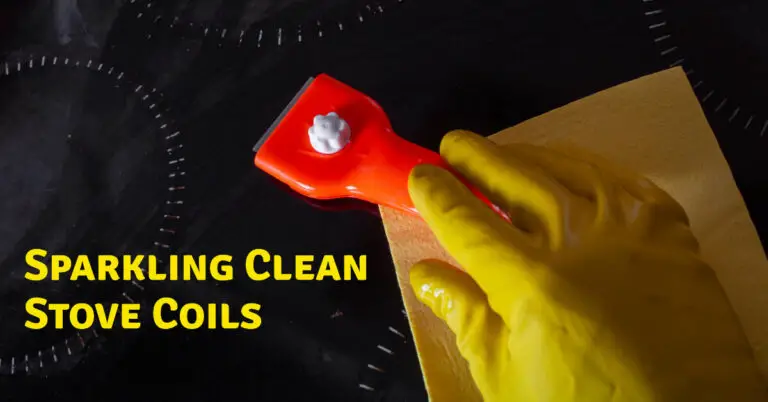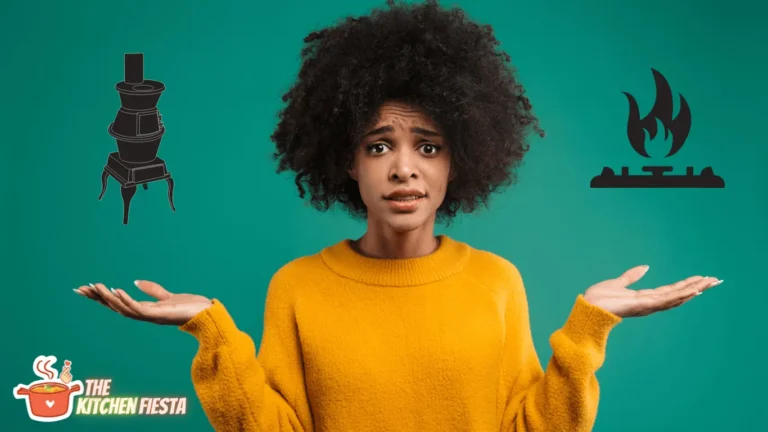Why Does a Gas Stove Not Need to Be Vented? the Risks & Requirements

Cooking with gas is a popular choice for many homeowners. Gas stoves heat up quickly, provide responsive temperature control, and many people prefer the flavor of food cooked over an open gas flame. However, gas ranges also come with some potential downsides when it comes to indoor air quality and safety.
Specifically, many homeowners wonder: do gas stoves need to be vented?
The short answer is: while venting is not legally required in all cases, it is strongly recommended for gas ranges to reduce the risks of air pollution and dangerous carbon monoxide buildup in the home.
In this comprehensive guide, we’ll cover the benefits of venting a gas stove, look at alternatives like ductless range hoods, summarize ventilation codes for residential gas appliances, provide recommendations for selecting and installing proper range hoods, and outline tips for operating your gas range safely.
Do Gas Stoves Need Ventilation?
While gas stoves provide quick, consistent heating for cooking, the combustion of natural gas or propane does produce some byproducts that can impact indoor air quality.
Pollutants from Gas Stoves
The main pollutants released from gas stoves that impact air quality include:
- Nitrogen dioxide: An odorless gas that can cause respiratory issues with prolonged exposure. Gas stoves are a major source of nitrogen dioxide indoors.
- Carbon monoxide: An extremely dangerous, odorless gas that can be deadly at high concentrations. Improperly vented gas stoves release carbon monoxide.
- Formaldehyde: Released in small amounts from gas stove burners and can irritate eyes and respiratory systems.
- Other airborne particulates: Fine particles released into the air from gas combustion.
Proper ventilation is recommended to remove these gaseous byproducts and particulates, improving the air quality in the kitchen and home.
The Risk of Carbon Monoxide Poisoning
Carbon monoxide is a major concern with any gas appliance, including stoves. CO is a colorless, odorless gas produced by the incomplete combustion of fuels like natural gas or propane.
In poorly ventilated environments, carbon monoxide can quickly build up and reach dangerous levels. At high concentrations, CO replaces oxygen in the bloodstream and can lead to headaches, dizziness, unconsciousness, and even death.
Because carbon monoxide is impossible to detect without a monitor, gas stoves should always be properly vented to the outside. Venting removes CO from the kitchen before it spreads through the home.
Why Ventilation is Recommended for Gas Ranges
While not always legally mandated, there are important benefits to venting a gas range that make it highly recommended:
- Removes dangerous CO that can be a deadly threat if allowed to accumulate
- Reduces other exhaust particulates that impact indoor air quality
- Prevents cooking odors from spreading throughout the house
- Protects cabinets, walls, and countertops from grease buildup
- Improves comfort while cooking by removing excess moisture, heat, and steam
In short, properly venting the byproducts of gas combustion makes cooking with a gas stove much safer and more pleasant.
Ventilation Guidelines and Codes for Gas Appliances
If you’re wondering “does my gas stove need to be vented?” the requirements depend somewhat on your local building codes and the manufacturer specifications for your particular appliance model.
Residential Building Codes for Gas Appliances
Many municipal residential building codes do not explicitly require venting for gas stoves on their own. However, they do set standards for kitchen ventilation when a gas appliance is in use.
For example, the International Residential Code (IRC) states that any kitchen space with a gas cooking appliance must have either:
- A vented range hood providing at least 100 CFM airflow
- A vented microwave/range hood combo providing at least 100 CFM
- A vented downdraft range hood system
- An open window or louvered opening providing natural air movement
So while a range hood or other ventilation is not always an absolute requirement, it is strongly recommended. And a powerful, ducted range hood is far more effective than just relying on an open window in removing combustion byproducts.
Manufacturer Instructions for Gas Ranges
While residential building codes may not mandate venting in all cases, specific requirements can also vary based on the manufacturer of your gas range appliance.
Many appliance manufacturers explicitly recommend, or even require, proper venting and ducting to the outdoors for their gas ranges. This is to safely remove carbon monoxide along with other exhaust gases.
Always check the installation manual or instructions for your specific gas range model for any venting requirements specified by the manufacturer. Many will provide details on recommended CFM for ventilation based on the BTU output of the burners.
Failing to properly vent a gas appliance when required by the manufacturer could potentially void the warranty. So be sure to check documentation for your specific stove.
Ventilation Options for Gas Ranges
There are a few different options for effectively venting the byproducts of combustion from a gas range:
Vented range hood: The most common approach, where a powerful range hood mounted over the stove is ducted through the wall or roof to vent outside.
Downdraft ventilation: Ductwork runs underneath and vents through the floor below the range.
Sidewall venting: Ducting runs horizontally to vent through an exterior side wall.
Vented microwave/hood: Microwave with built-in ventilation fans ducted outside.
For kitchens with gas stoves, a quality range hood vented to the exterior is typically the best option for meeting airflow requirements and effectively removing pollutants.
Alternatives to Vented Range Hoods
While venting a gas range is recommended, there are some alternative options to traditional externally ducted range hoods that may work in some situations:
Ductless (Recirculating) Range Hoods
Ductless range hoods pull in cooking exhaust, pass it through grease and carbon filters, and then recirculate the air back into the kitchen. While they do remove some contaminants, ductless models are not effective at evacuating larger amounts of combustion byproducts from a gas range.
If you do opt for a ductless range hood, be sure to also install carbon monoxide detectors/alarms to monitor CO levels. Combine with regular use of windows/exterior doors for additional ventilation.
Downdraft Range Hoods
Downdraft ventilation systems are built into the cooktop or range itself. They draw in cooking exhaust from the top and vent it downward, often exiting through the floor or bottom of cabinetry.
While downdraft systems do not require wall or roof penetration for ducting, they can be less effective than exterior venting and more expensive to install. But they can work well in some kitchen layouts.
Open Windows/Doors
Relying solely on open windows or doors instead of proper stove ventilation is generally not an effective or ideal solution. While windows can provide additional fresh air, they rarely move enough air to properly remove all combustion byproducts from a gas range.
Selecting the Right Range Hood
If you’re installing a new range hood or updating existing ventilation, you’ll want to select an appropriately sized and featured model:
Airflow (CFM) Capabilities
Selecting a range hood with enough airflow capacity is crucial for proper ventilation. Here are some general recommendations on CFM levels based on your gas cooktop burner output:
- 30′′ range with up to 30,000 BTU burners – minimum 600 CFM range hood
- 30′′ range with up to 40,000 BTU burners – minimum 700 CFM range hood
- 36′′ or larger commercial-style range – 800-1200+ CFM range hood
Higher BTU output necessitates more powerful ventilation. Going with the largest CFM range hood you can is ideal to effectively capture cooking exhaust.
Ducted vs. Ductless Range Hoods
For gas stoves, a ducted range hood vented outside is strongly recommended. Ductless models are far less capable of removing the volumes of combustion byproducts coming from a gas burner.
If you must go ductless, opt for a model with multiple fan speeds and be sure to also install CO detectors.
Mounting and Style
Consider the mounting that fits your kitchen layout – wall mounted chimney hoods, low-profile under-cabinet models, or downdraft for cooktops/islands.
Features
Look for multiple fan speeds, dimmable lights, metal mesh grease filters, and automated functions like auto shut-off. Stainless steel is easy to clean and matches most kitchens.
Installing and Maintaining Range Hoods
Proper installation combined with regular maintenance are key to getting optimal performance from a kitchen ventilation system.
Professional Installation
Unless you are very experienced, it’s advisable to have a professional install a new range hood. They can handle ducting, electrical, and cabinet modifications correctly so the system achieves proper airflow and venting.
Ducting
Use rigid metal ductwork for best airflow. Keep duct runs short and with minimal bends. Insulate ducts to reduce noise and prevent condensation buildup.
Regular Maintenance
Clean metal grease filters monthly in the dishwasher or degreaser. Activated charcoal filters in ductless models should be swapped out every 6-12 months.
Inspect and Test
Periodically inspect the ducting for any blockage or leaks. Test the CFM with an anemometer to ensure the range hood fans are performing properly.
Operating Gas Stoves Safely
In addition to proper ventilation, be sure to take other safety precautions when cooking with your gas range:
- Always turn on your range hood when using the stove – even if it’s ductless or you have an open window.
- Install carbon monoxide detectors/alarms in the kitchen and other rooms per local building code requirements. Replace CO detector batteries annually.
- Never let food or grease splatter or build up on stove burners. Clean spills promptly after cooking.
- If you ever smell gas, immediately turn off the range, open windows, and evacuate before calling 911. Never re-enter until cleared by officials.
- If carbon monoxide detectors sound an alarm, leave your home and call emergency services. Do not re-enter until safe CO levels are verified.
Signs of Carbon Monoxide Poisoning
Watch out for the following symptoms, which may indicate dangerous carbon monoxide buildup resulting from improperly vented gas appliances:
- Headaches
- Dizziness
- Nausea
- Chest pain
- Confusion
- Fatigue
- Shortness of breath
If you experience symptoms that may be CO poisoning, get into fresh air and seek medical help immediately.
Conclusion and Key Takeaways
While legally mandated venting is not required for all residential gas ranges, properly ducting and venting your gas stove to the exterior is strongly recommended and should be considered a must-have. Ventilation is critical for reducing the risks of dangerous carbon monoxide exposure and for maintaining good indoor air quality in the kitchen by removing nitrogen dioxide, particulates, and other combustion byproducts.
Carefully select a powerful, ducted range hood sized appropriately for your gas cooktop’s BTU output. Have a qualified professional install the ducting and fan system to maximize performance. Combine with smart practices like using stove ventilation while cooking, installing carbon monoxide detectors, and regular maintenance. Following these gas range ventilation recommendations allows you to safely enjoy the quick cooking benefits of gas while minimizing safety and air quality concerns.






